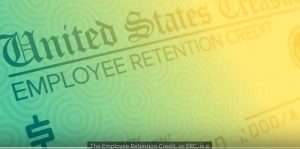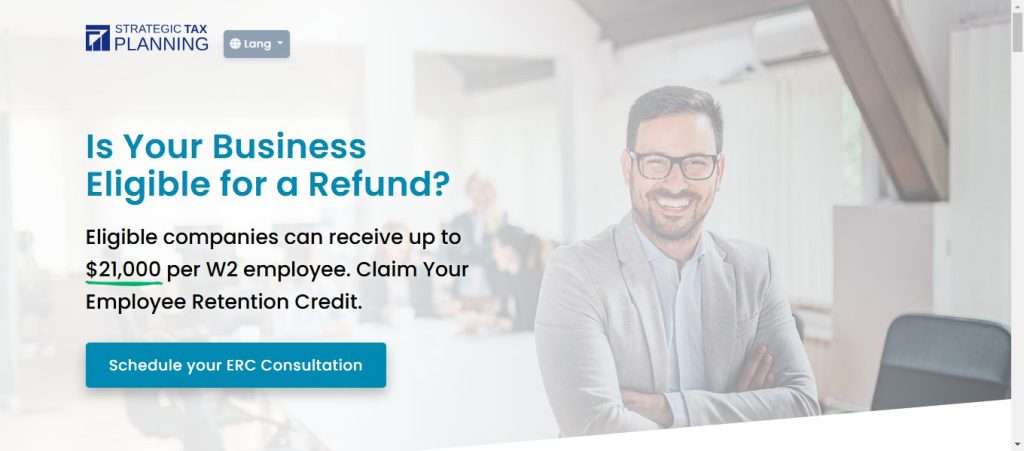Employee Retention Credit Deadline is Fast Approaching: A Comprehensive Guide to ERC
The Employee Retention Credit deadline is fast approaching. Many businesses and non-profit organizations have still not claimed their credit. The ERC is a game-changer for businesses looking to recover financially from the impact and challenges created by the COVID-19 pandemic. Eligible companies can still claim up to $21,000 per W2 Employee for 2021 if they qualify. This comprehensive guide will give you an overview of the information you need to secure your credit before the April 15th tax deadline.
What is the Employee Retention Credit (ERC)?
The employee retention credit (ERC) is a refundable payroll tax credit that was put into law through the Coronavirus Aid, Relief, and Economic Security (CARES) Act. The ERC is for businesses that continued to pay employees while shut down, faced government restrictions due to COVID-19, or had a significant decline in gross receipts from March 13th, 2020 to September 30th, 2021. This credit offsets employment taxes paid by an employer to offer relief from the COVID-19 pandemic.
Eligible companies can qualify with a change in business operations or decreased revenue during covid.
Businesses that received a PPP loan are still eligible to claim the ERC. Under the Consolidated Appropriations Act, businesses are allowed to claim the ERC, however ERC will only apply to wages not used for the PPP.

What is the Employee Retention Credit? Schedule your Free Consultation and start your ERC Claim today.
How Does a Business Qualify for the ERC
The ERC allows employers to claim a maximum credit amount of $21,000 per employee. For the tax year 2021, employers can claim up to 70% of qualified wages per employee per quarter, with a maximum credit of $21,000 for the year. Most businesses will only be eligible to claim qualified wages for Q1 through Q3 of 2021.
- Employers who had a significant decline in gross receipt for any eligible quarter in 2021 or a 20% reduction in revenue in any quarter of 2021 compared to the same quarter in 2019.
- A full or partial suspension of operations – due to orders from the federal government, or a state government having jurisdiction over the employer, limiting commerce, travel, or group meetings related to COVID-19.
Examples of how your business may have been impacted by the COVID pandemic:
- Decline or reduction in revenue
- Change in Business hours
- Supply chain or vendor interruptions
- Reduction in services offered
- Reduction in workforce or employee workloads
- Lack of travel and group meetings
The ERC program covered eligible wages paid to W-2 employees from March 13th, 2020 through September 30th, 2021 for eligible employers. The window for claiming 2020 has expired, however the Government is still allowing businesses to claim the ERC for the year 2021 (Quarters 1 through 3).
Businesses that had revenue that went up during the pandemic still qualify for the ERC if they had a full or partial suspension of business operations.
Qualifying May Seem Complex
Filing for the Employee Retention Credit is a complex process. Most regular CPA’s or payroll processors are not familiar with all of the government requirements to maximize a business’s return.
“… A lot of business owners have missed out on the ERC because their accountant or CPA did not want to handle the process. Seeking an ERC specialist or tax firm that handles the Employee Retention Credit – is that one final chance for business owners …” (- Rick /CEO Worksmarter4u)
An ERC expert should discuss the following with your organization:
- No upfront cost to handle your organization’s filing of the Employee Retention Credit
- Thorough evaluation regarding your eligibility
- How the PPP loan (if received) factors into the ERC
- Comprehensive analysis of your claim
- The differences between the 2020 and 2021 programs and how does it apply to your business
- Guidance on the claiming process and documentation
- A fast and smooth end-to-end process, from eligibility to claiming and receiving funds
- The ability to support businesses or non-profit organizations in the event the IRS questions information provided on your ERC submission.
The ERC can make a huge difference in your business’s financial health. With the Employee Retention Credit deadline fast approaching it’s crucial that business start the filing process immediately.
ERC Recommendations
Strategic Tax Planning offers business owners and non-profit organizations with 10 or more employees the opportunity to file their ERC claim for them if a Free consultation is scheduled no later than April 1st. They have a dedicated team of ERC specialists that have handled thousands of claims for business. They analyze your claim, prepare the ERC filing, and submits the paperwork on your behalf.
Strategic Tax Planning can handle the entire ERC process from beginning to end so you can maximize the ERC for your business.

Schedule your Free Consultation with no obligation by April 1st 2025
With the Employee Retention Credit April 15th Deadline fast approaching, the window for filing your claim is closing fast. With a better understanding of the qualifications and requirements needed, this article should assist you in having a more informed decision of how you can claim the Employee Retention Credit.
Subscribe to our Worksmarter4yourfuture newsletter for the latest information on marketing, ERC, the Self- Employed Tax Credit, Gold and Silver and the latest AI technology.



